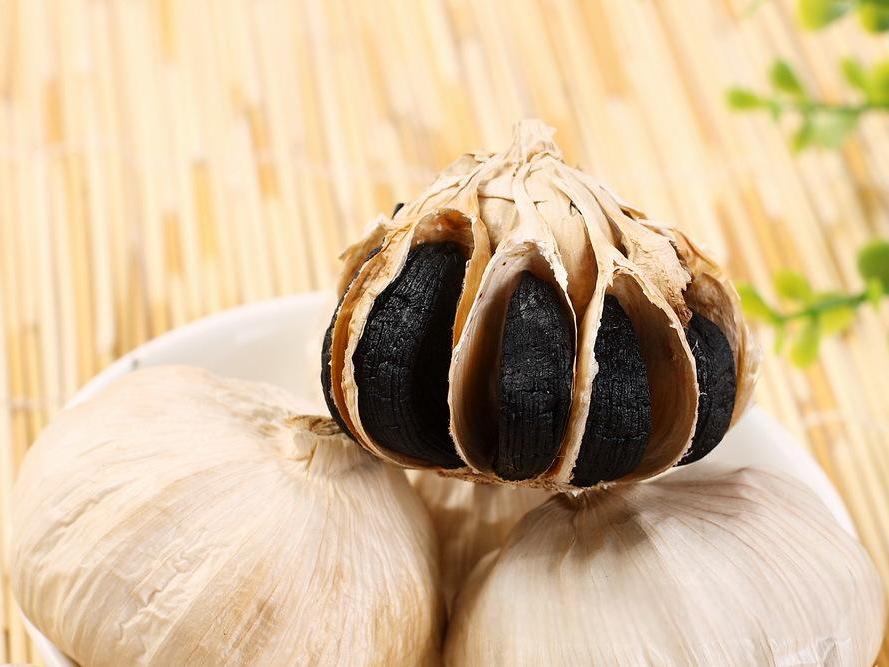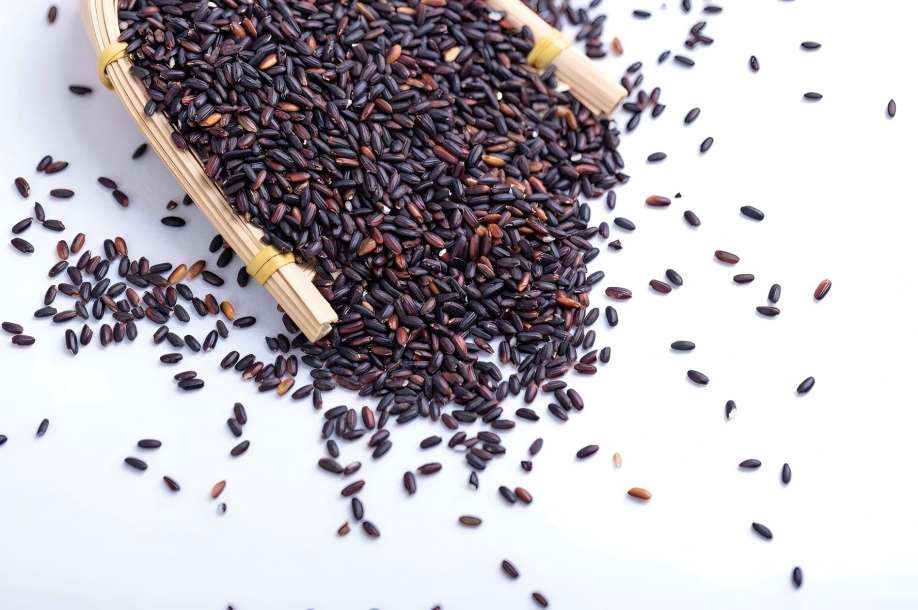Do You Know How to Make Black Garlic?
Black garlic, also known as fermented black garlic, is a product made by fermenting fresh garlic at high temperatures and high humidity. Compared to garlic, black garlic has a significantly lower content of substances such as water and fat, and a significantly higher content of substances such as sugars and trace elements. The content of substances such as protein, reducing sugars and vitamins is at least twice that of garlic. Therefore, black garlic is rich in essential nutrients for the human body and can even improve human body functions. It has various functions such as anti-oxidation, antibacterial, immune enhancement, liver protection and liver care. Black garlic is soft and elastic, and after entering the mouth, it is soft and sweet, without the pungent taste and irritating odor of garlic. It has become a recognized natural health food with broad prospects for development and application [1-4].
The main raw materials for processing black garlic are multi-clove garlic and single-clove garlic. Multi-clove garlic is divided into white-skinned garlic and purple-skinned garlic, and the raw material for single-clove garlic is mostly produced in Yunnan. The products are called multi-clove black garlic and single-clove black garlic respectively. Since the price of single-clove garlic is higher than that of multi-clove garlic, the price of single-clove black garlic is higher than that of multi-clove black garlic. However, single-clove black garlic is more convenient to eat and has a better taste, so it is loved by consumers [5-6]. Black garlic products come in a variety of forms, including black garlic with the skin on, black garlic without the skin, black garlic powder, black garlic drinks, black garlic jam, black garlic soy sauce, black garlic vinegar, and other replicas [7-8]. This paper discusses the current black garlic processing technology, pretreatment technology, and development direction, in order to provide a reference basis for the production and application of black garlic and further research.
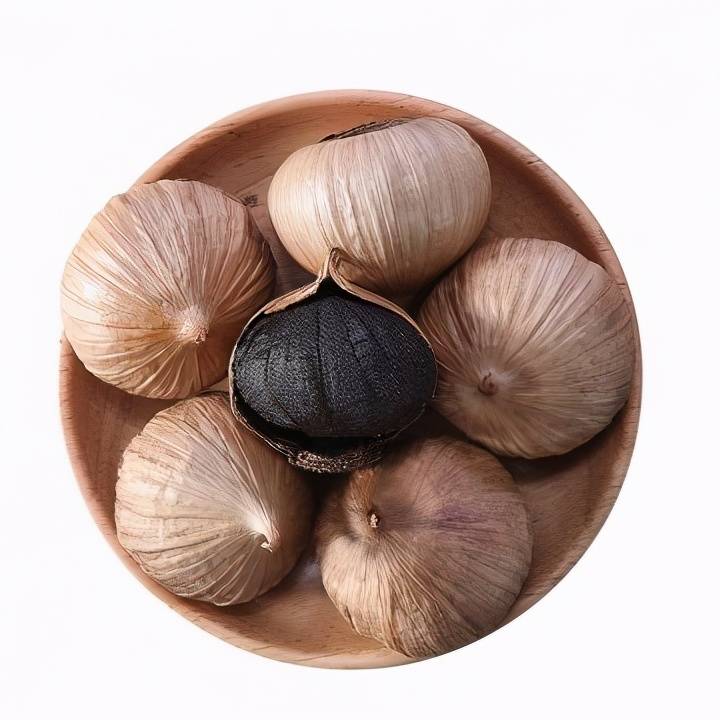
1 Black garlic processing technology
Garlic is fermented at high temperatures and high humidity, destroying its own cell tissue. A series of chemical reactions occur in the intracellular components, mainly the Maillard reaction between sugars containing carbonyl groups and components such as amino acids and proteins containing amino groups, producing melanin and forming the unique qualities of black garlic. Currently, there are two main processes for black garlic fermentation: solid-state fermentation and liquid fermentation [9-10].
1.1 Solid-state fermentation
Solid-state fermentation of black garlic is a fermentation method in which garlic is directly used as a solid substrate for self-fermentation. This preserves the integrity of the garlic and reduces the loss of nutrients, resulting in black garlic products with better organoleptic qualities. At present, the solid-state fermentation process is mostly used in the production of black garlic in China. The main process flow is as follows: garlic raw material selection → inspection → grading and selection → loading onto trays → high-temperature, high-humidity fermentation → sterilization and disinfection → packaging → product inspection → finished product [11-12].
In the solid-state fermentation process, high-temperature, high-humidity fermentation is the most important step. It is the condition for the Maillard reaction in garlic and also the main factor affecting the content of active ingredients in black garlic [13]. High-temperature, high-humidity fermentation can be divided into two types: constant temperature fermentation and variable temperature fermentation. In constant temperature and humidity fermentation, garlic is placed in a fermentation workshop, heated to 50–80 °C, and humidified to 50%–80%. The black garlic can be made after one month of fermentation. This method is easy to operate and control, but it consumes a lot of energy and is inefficient [14]. However, variable temperature fermentation is beneficial to the accumulation of effective ingredients in black garlic, and can better improve the sensory quality of black garlic, improve the efficiency of processing, and save energy [15]. At present, domestic black garlic production mostly uses variable temperature fermentation. During the use of variable temperature fermentation, the origin, variety and storage conditions of each batch of garlic are different, so its moisture content, garlic clove size, and component ratio also vary. The temperature and time at each stage of the actual fermentation process need to be determined and controlled by experienced technicians.
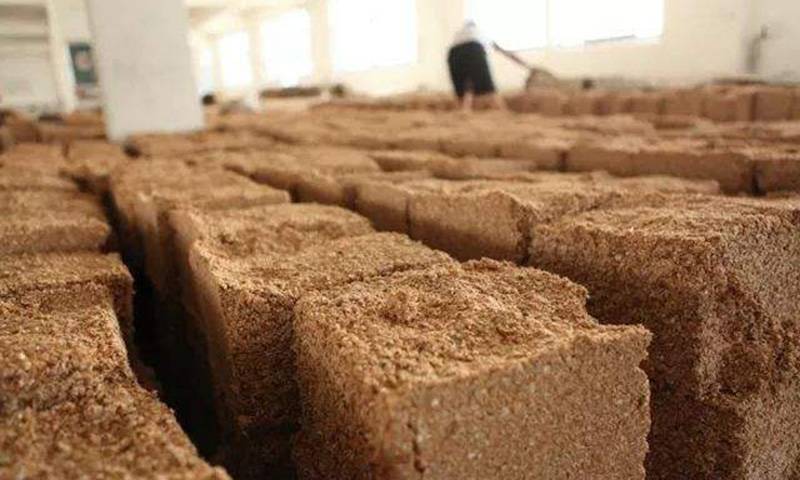
1.2 Liquid fermentation
Most of the existing production processes for black garlic ferment the whole garlic, and there are fewer reports on the liquid fermentation process. Liquid fermentation mainly uses crushed garlic or garlic granules as raw materials, which are placed in a sealed container and fermented with a certain proportion of water as the fermentation substrate [16]. The process flow of liquid fermentation is garlic selection → peeling → cleaning → garlic clove crushing → vacuum sealing → fermentation → drying → packaging → finished product [17].
During liquid fermentation, no foul-smelling substances such as sulfides are emitted from black garlic, which greatly improves the working environment. In addition, the liquid fermentation process shortens the fermentation time and increases the content of active substances in black garlic by adding water, sealing and fermenting at a variable temperature. It is simple to operate, takes up little space and is convenient for industrial production. The liquid-to-material ratio and the garlic clove crushing process are important factors affecting the liquid fermentation of black garlic. The size of the garlic cloves and the liquid-to-material ratio directly affect the accumulation of effective substances in black garlic. Luo Cangxue et al. [18] showed that when the particle size is 4 mm and the liquid-to-garlic ratio is 2:1, the resulting black garlic product is dark brown in color, uniform in color, sweet and sour in taste, almost without the garlic odor, compared with unfermented garlic, the SOD activity is increased by 15 times, the total phenol content is increased by 5 times, and the soluble sugar content is reduced by about 30%.
2 Black garlic processing pretreatment technology
Traditional black garlic processing is time-consuming and energy-intensive. Various pretreatments such as freezing and ultrasound can be used to destroy the cell structure of garlic, promote the dissolution of reaction substrates, accelerate the Maillard reaction and fermentation process, shorten the processing time of black garlic, and reduce energy consumption and costs. Pretreatment can promote the accumulation of reducing sugars, amino nitrogen, total phenols and other contents in black garlic, increase the content of functional ingredients, and the taste, color and flavor of the prepared product are almost the same. At present, the main pretreatments of garlic in the domestic production of black garlic are low-temperature freezing, ultrasound, microwave and other methods [19].
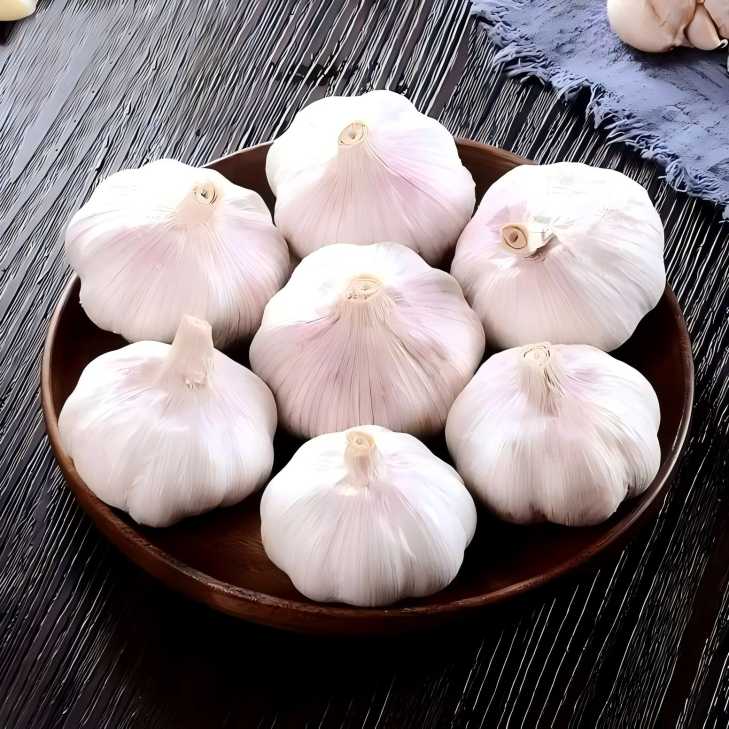
2.1 Low-temperature freezing
Under freezing conditions, ice crystals form inside garlic cells, changing the solvent concentration inside and outside the cells, causing cell swelling, destruction of the cell walls and cell membranes, and destruction of the cell structure. Garlic is placed under frozen (-18 ℃) conditions for a period of time, which fully breaks down the cell tissue. Then, it is placed under 45 ℃ conditions, and due to the increase in temperature, the intracellular tissue fluid flows out, and the fructans come into full contact with the enzyme and are hydrolyzed, producing reducing sugars. Combined with the 15-day variable temperature fermentation process, this accelerates the Maillard reaction and shortens the processing time. The content of substances such as total phenols in black garlic is also increased, and the quality of the finished black garlic is improved [19-20]. Sensory assessment results show that black garlic pretreated by freezing has a sweeter taste and better texture. The lower the freezing temperature, the sweeter the taste; the higher the reaction temperature, the more significant the change in the appearance of the garlic, and the smaller the volume. In the early stage, the garlic is soft and sticky, while in the later stage, it is more elastic and not sticky [11,21].
2.2 High temperature
High temperatures can cause a series of changes in food, such as protein denaturation, enzyme inactivation, and starch denaturation, as well as damage to cell structure. Zhao Xueqing et al. [11] peeled fresh garlic and boiled it in water at 100 °C for 3 min, then fermented it at 70 °C and 85% relative humidity to obtain a black garlic product. Compared with the control group, there was no significant change in fermentation time, but the content of reducing sugar, total phenol and amino nitrogen increased. Wang Xibo et al. [22] obtained black garlic under the conditions of steaming temperature 127 °C, steaming time 70 min, drying temperature 95 °C, baking time 6.5 h conditions prepared black garlic and traditional fermentation process prepared black garlic product quality is basically similar, total phenol and other active ingredient content is also similar, but significantly shorten the black garlic preparation time, improve production efficiency, reduce energy consumption, for the development and utilization of functional garlic products provides the technical basis.
2.3 microwave
Garlic heating with microwaves can have the same effect as high temperature pretreatment. Li Shanshan [23] found that after 1 min of microwave pretreatment at 450 W, the processing time of black garlic was shortened from 21 d to 18 d. The browning intensity of the microwave treatment group reached the effect of the control group on the 15th day of fermentation. At the 18th day of fermentation, the reducing sugar of the microwave treatment group was as high as 40%, while the control group did not reach 40% until the 21st day. The total phenol content of the microwave-treated group was significantly higher than that of the control group throughout the fermentation process. The amino nitrogen content of the microwave-treated group began to show a downward trend on the 9th day, while the control group did not show a downward trend until the 15th day.
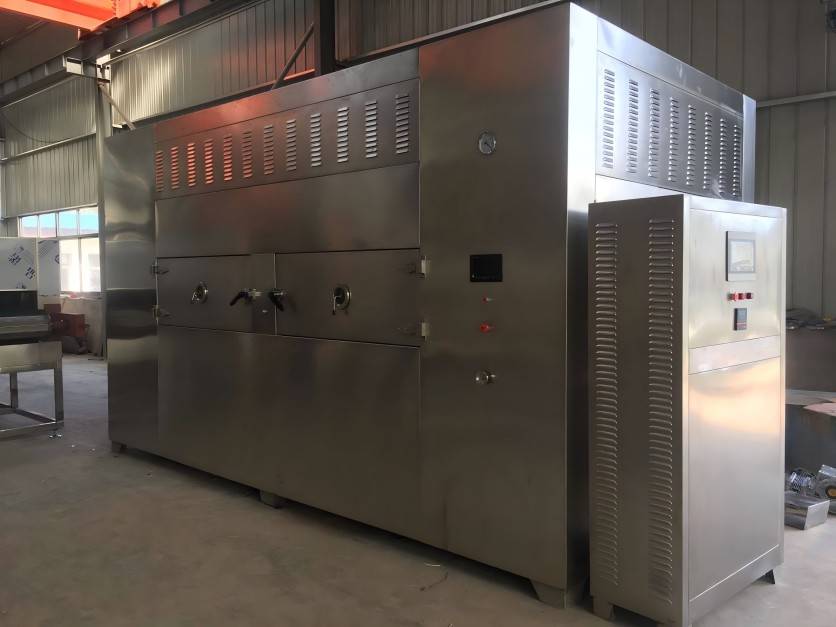
2.4 Ultra-high pressure
Ultra-high pressure technology is a physical process that can break non-covalent bonds in food, denature, inactivate, and gelatinize macromolecules such as proteins, enzymes, and starches in food, and has a certain effect on their structure. It is a green and environmentally friendly food processing technology that reduces many of the drawbacks of traditional thermal processing techniques. Meng Lingdong et al. [24] used a combined ultra-high pressure pretreatment and fermentation method to prepare finished black garlic. The test found that with the increase of ultra-high pressure and the extension of holding time, the browning rate of black garlic first increased and then decreased, the moisture content decreased, the total sugar content increased, and the elasticity increased. This indicates that under the condition of ultra-high pressure of 300 MPa and holding pressure for 15 minutes, the finished black garlic is sweet and sour, fine in texture, and elastic, and the quality of the finished black garlic is the best. Zhong Cheng et al. [25] prepared black garlic by pretreating garlic with ultra-high pressure and fermenting it. The results showed that the antioxidant capacity of the prepared black garlic was significantly higher than that of white garlic, and the reducing capacity and hydroxyl radical scavenging capacity were highest when the holding time was 5 min and 20 min, respectively.
2.5 Other
Pre-treatment methods such as low-temperature freezing, high temperature, and microwaving can promote the accumulation of reducing sugars and the production of polyphenols in black garlic, shorten the processing time, and improve production efficiency. In addition, there are other pretreatment techniques for black garlic processing. For example, Pei Houbao [19] found that ultrasonic pretreatment can effectively increase the total enzyme and reducing sugar content of black garlic, increase browning, significantly reduce processing time, and improve the quality of the finished black garlic. Compared with ordinary black garlic, it can effectively reduce the bitterness of the finished black garlic and improve the taste. Studies have shown that aerobic respiration inhibition pretreatment can also effectively shorten the processing time of black garlic, significantly increase the content of reducing sugars and total phenols in the product, and improve the taste of the product compared to ordinary black garlic. It can be seen that ultrasonic pretreatment can change the average distance between garlic molecules with continuous molecular vibration, producing cavitation and destroying the garlic cell structure; while aerobic respiratory inhibition pretreatment can cause garlic to produce hexanol and acetic acid, thereby destroying the cell structure.
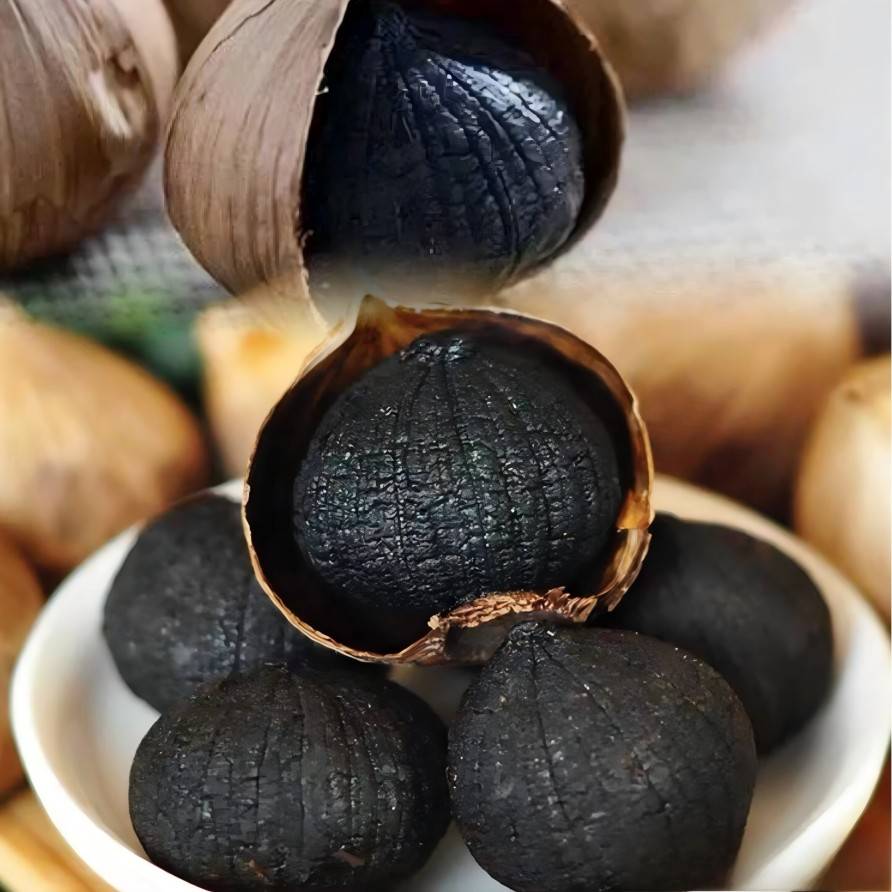
3 Summary
At present, the fermentation equipment for controlling the temperature and humidity during the processing of black garlic is relatively mature, and there has been a lot of research on the pretreatment technology for processing black garlic. However, there are relatively few enterprises that actually use pretreatment processing technology in production, mainly due to a lack of supporting pretreatment equipment. Therefore, the next step for black garlic equipment manufacturers is to increase research and design in this area, and produce corresponding pretreatment equipment for processing black garlic, in order to improve the processing efficiency and quality of black garlic in actual production. At the same time, it is also possible to develop equipment that can be used in conjunction with a variety of pretreatment technologies. However, attention should be paid to the relationship between the price of the equipment and the actual production benefits, so that the pretreatment equipment is simple and practical.
Reference:
[1] KIMURA S, TUNG YC, PAN MH, et al. Black garlic: A critical review of its production, bioactivity, and application [J]. Journal of food & drug analysis, 2017, 25(1): 62-70.
[2] Ji Yanru, Shi Jie, Liu Yufeng. Analysis of changes in the main nutrients during the production of black garlic and process optimization [J]. Food Industry Science and Technology, 2015, 6(5): 360-364.
[3] ZHANG Z, LEI M, LIU R, et al. Evaluation of alliin,saccharide contents and antioxidant activities of black garlic during thermal processing[J]. Journal of food biochemistry, 2015, 39(1): 39-47.
[4] Zheng Lan, Ma Yaohong, Yang Junhui, et al. Comparative study on the structural characteristics and antioxidant activity of black garlic polysaccharides and fresh garlic polysaccharides [J]. Food Science and Technology, 2018, 43(4): 194-200.
[5] Zhu Xinpeng, Wang Yingmei. A comparison of the quality of five types of black garlic prepared from garlic [J]. Chinese Condiments, 2019, 44(1): 117-124.
[6] Jiang Xue. Research on the quality standard of black garlic [D]. Tai'an: Shandong Agricultural University, 2016.
[7] Ren Guangyue, Liu Hang, Liu Yanan. Optimization of spray drying process of black garlic enzymatic solution by response surface methodology [J]. Food Research and Development, 2016, 37(21): 72-78.
[8] Huang Minxin, Zhao Wenhong, Bai Weidong. Research progress on the health functions and processing technology of black garlic [J]. Chinese Condiments, 2015, 40(8): 136-140.
[9] ZHANG X, LI N, LU X, et al. Effects of temperature on the quality of black garlic [J]. Journal of the science of food &agriculture, 2016, 96(7): 2366-2372.
[10] Xiong Xinjian, Lu Jianxin, Li Dan, et al. Black garlic processing technology and its application [J]. Agricultural Products Processing (Journal), 2014(6): 74-77.
[11] Zhao XQ, Li SS, Hou WB, et al. Effect of different pretreatments on the quality of black garlic [J]. Food Industry Science and Technology, 2017, 38(23): 1-4.
[12] Chen B. Analysis of characteristic components of fermented garlic and research on fermentation process [D]. Xuzhou: China University of Mining and Technology, 2017.
[13] KANG OJ. Physicochemical characteristics of black garlic after different thermal processing steps [J]. Preventive nutrition & food science, 2016, 21(4): 348-354.
[14] Yang X. Production and processing method of black garlic: China, CN200810228855.4[P]. 2010-06-16.
[15] Anton. Research on black garlic processing technology [D]. Tai'an: Shandong Agricultural University, 2011.
[16] Zhao Y, Zhang X L, Tang G S, et al. Research on the preparation process and antioxidant activity of black garlic by non-fermentation method [J]. Food Science and Technology, 2014, 39(8): 91-95.
[17] Shaanxi University of Science and Technology. A method for preparing black garlic by liquid fermentation: China, CN201210435546.0[P]. 2013-02-13.
[18] Luo Cangxue, Su Dongxia, Chen Shuyu. Optimization of liquid black garlic fermentation process [J]. Transactions of the Chinese Society of Agricultural Engineering, 2013, 29(18): 292-297.
[19] Pei Houbao. Study on the effect of pretreatment conditions on black garlic processing and its quality [D]. Tai'an: Shandong Agricultural University, 2013.
[20] Wang Haisu, Wu Hao, Yang Shaolan, et al. Comparative analysis of the quality of black garlic produced by different processes [J]. Modern Food Science and Technology, 2014, 30(7): 230-236.
[21] Chen Ling. Effect of freezing and Maillard reaction on the quality of black garlic [D]. Hefei: Anhui Agricultural University, 2018.
[22] Wang Xibo, Yu Jie, Zhang Zeyu. Study on the preparation process and antioxidant activity of black garlic by non-fermentation method [J]. Transactions of the Chinese Society of Agricultural Engineering, 2017, 48(4): 321-326.
[23] Li Shanshan. Effect of microwave pretreatment on process time and quality of black garlic [D]. Wuhan: Huazhong Agricultural University, 2018.
[24] Meng Lingdong, He Ruixi, Li Yun. Effect of different ultra-high pressure treatments on the processing quality of black garlic[J]. China Fruits and Vegetables, 2019, 39(5): 1-7.
[25] Zhong Cheng, Xu Guojuan, Wu Xiaoying, et al. Effect of holding time on some nutrients and antioxidant activity of black garlic [J]. Modern Food Science and Technology, 2014, 30(3): 49-52.


 English
English French
French Spanish
Spanish Russian
Russian Korean
Korean Japanese
Japanese

